Pesto Sauce
This post may contain affiliate links. Read my full disclosure policy.
Homemade pesto sauce is easy to whip up and delicious on just about everything—from pastas and pizzas to salads and sandwiches.

One of my favorite things about summer cooking is stepping out my back door to pick fresh herbs from my potted herb garden. It always amazes me how the tiny seedlings I plant in May grow into more herbs than I can possibly use up by August. When the basil is overflowing, it’s pesto time! Pesto, or pesto alla Genovese, is a vibrant, garlicky green sauce from Genoa, Italy. While the traditional method uses a mortar and pestle, these days, a food processor makes it a breeze. This versatile sauce is fantastic on everything—from pastas and pizzas to salads, vegetable soup, and sandwiches. What’s even better? It freezes like a dream, so you can enjoy a taste of summer all year long!
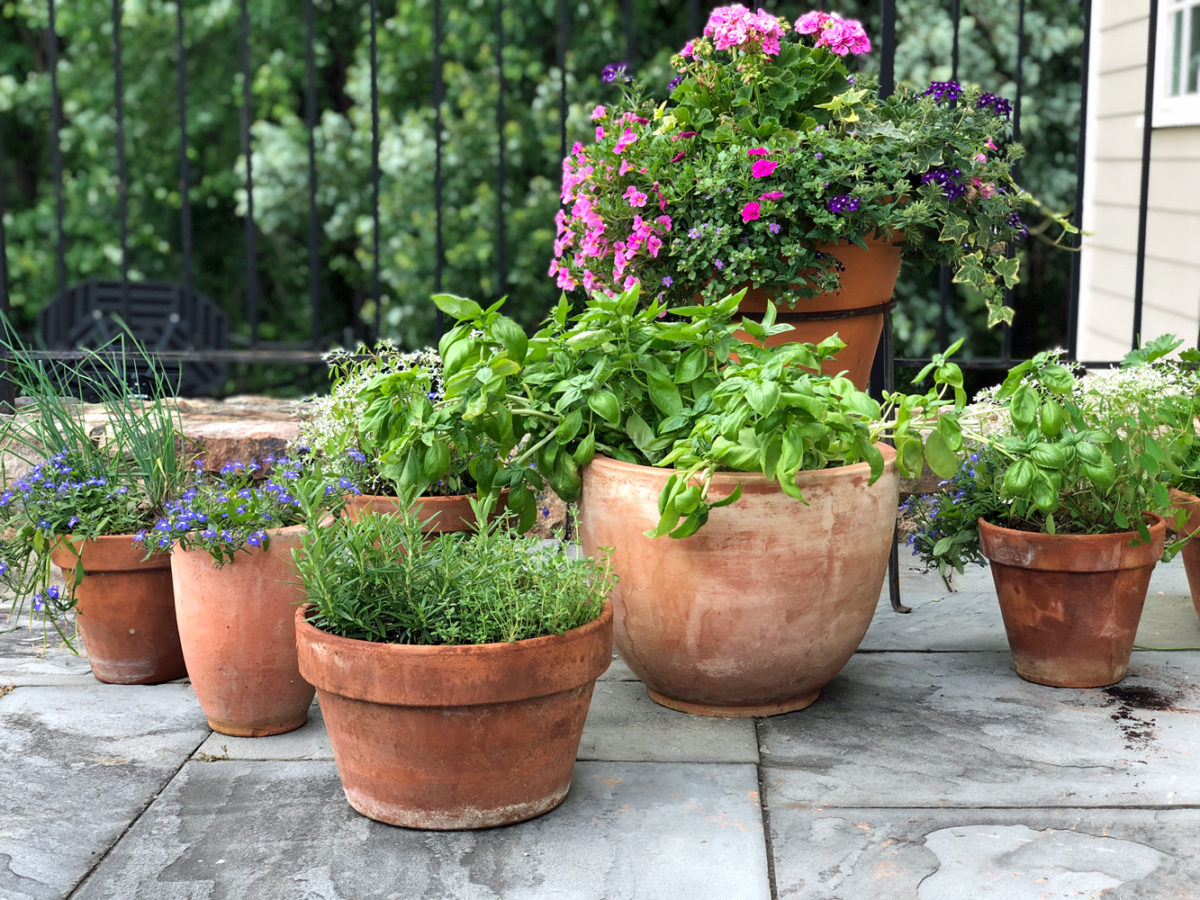
What You’ll Need To Make Pesto Sauce
Traditional pesto is made with garlic, nuts, salt, basil leaves, Parmigiano-Reggiano, and extra-virgin olive oil. It’s important to use top-quality ingredients, as the flavors really shine through.
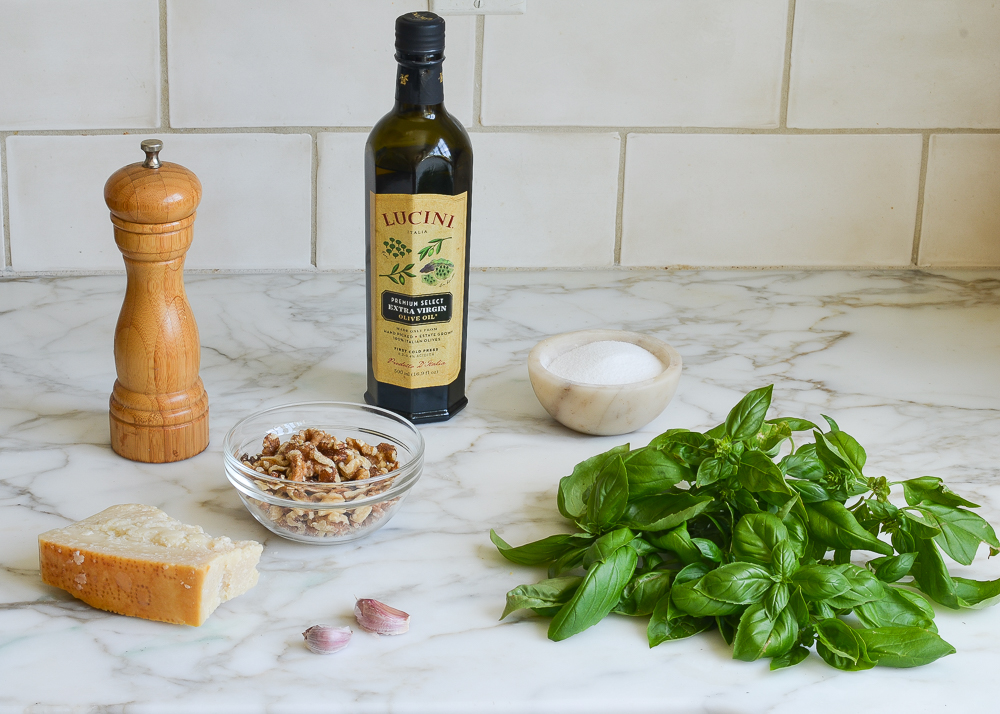
For the cheese, be sure to use authentic Parmigiano-Reggiano from Italy; domestic Parmesan is not the same thing. You can always tell if the cheese is authentic by looking at the rind, which is embossed with the name over and over. If the cheese is already grated, it should be labeled “Parmigiano-Reggiano,” not “Parmesan.”
For the nuts, I use walnuts instead of the more traditional pine nuts for a few reasons. First, I always seem to have walnuts in the house (pine nuts can be very pricey). Second, in recent years an increasing number of people, including me, have fallen prey to a bizarre problem with pine nuts called Pine Mouth Syndrome, a bitter, metallic taste in the mouth that develops a day or two after eating pine nuts. It can last for weeks and make eating or drinking anything very unpleasant. (You can use pecans or almonds, too.)
Step-by-Step Instructions
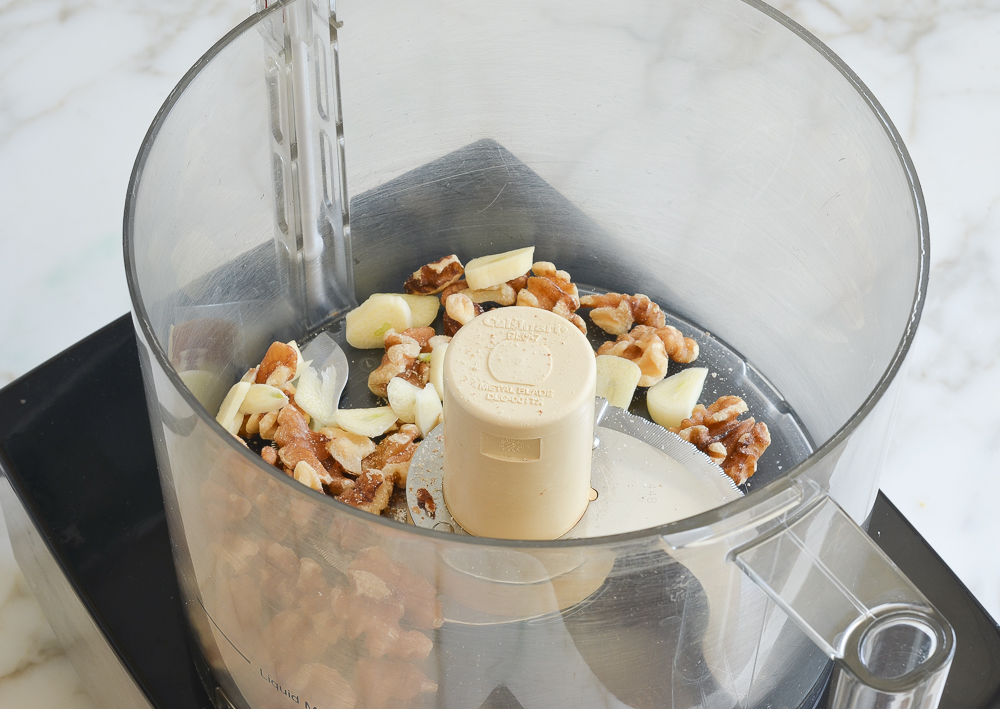
To begin, combine the walnuts and garlic in the bowl of a food processor and pulse until coarsely chopped.
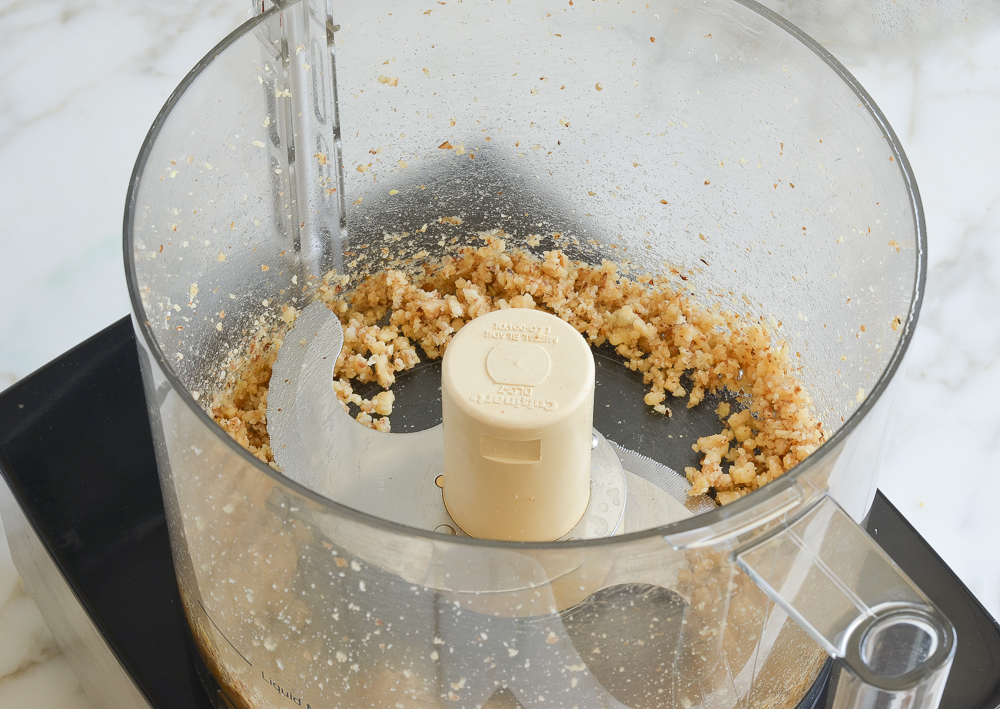
Add the basil leaves, salt, and pepper.
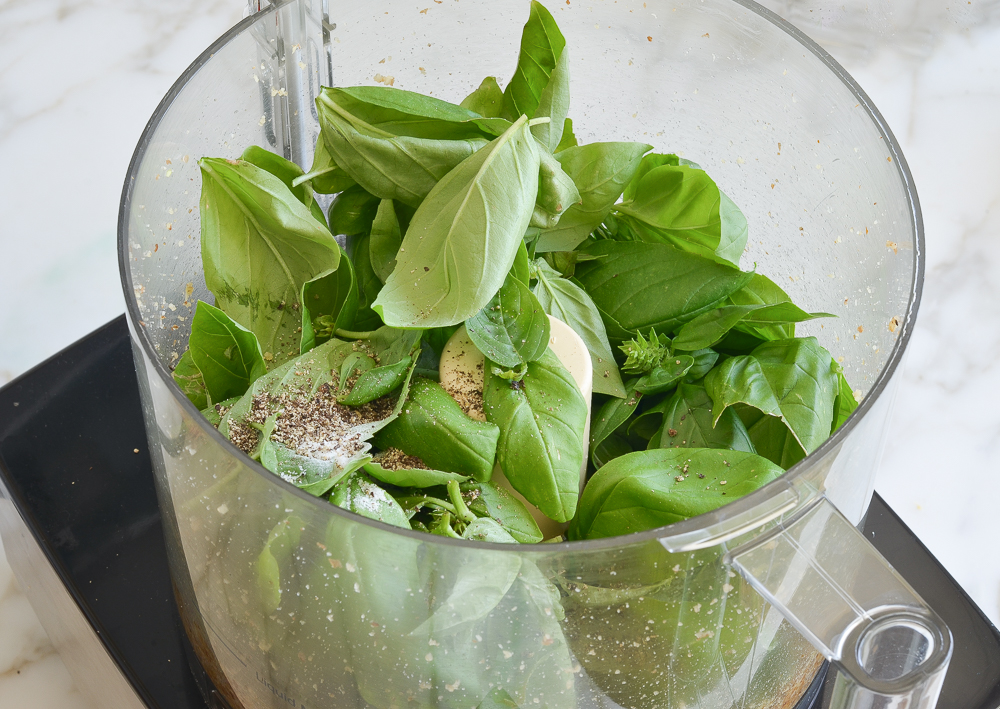
Process until finely chopped.
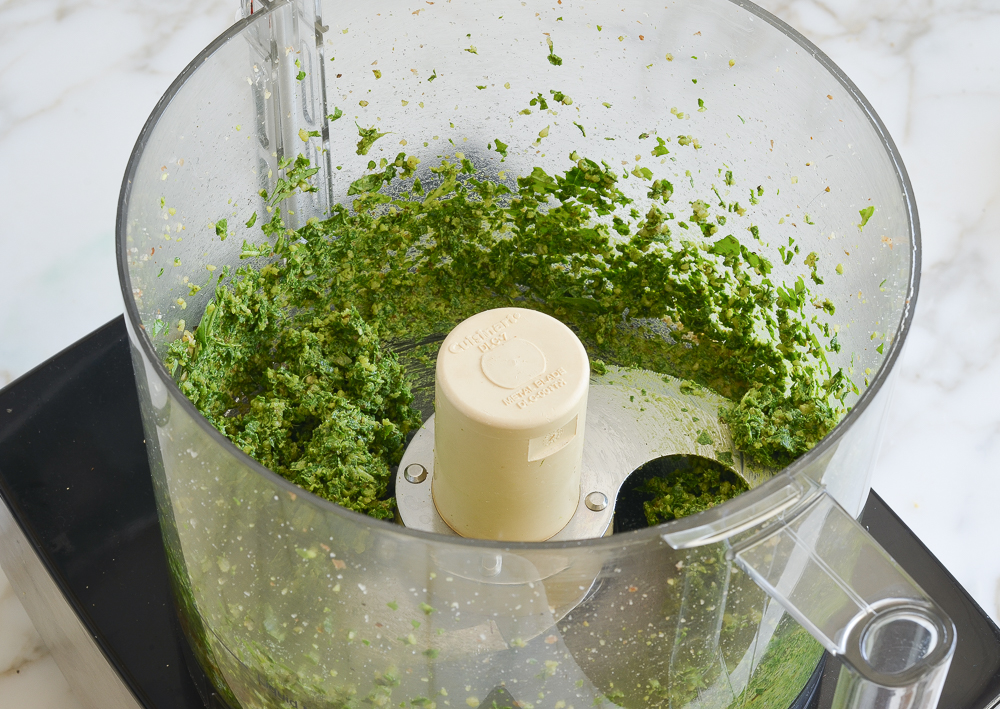
Then, with the food processor running, add the olive oil through the feed tube in a steady stream.
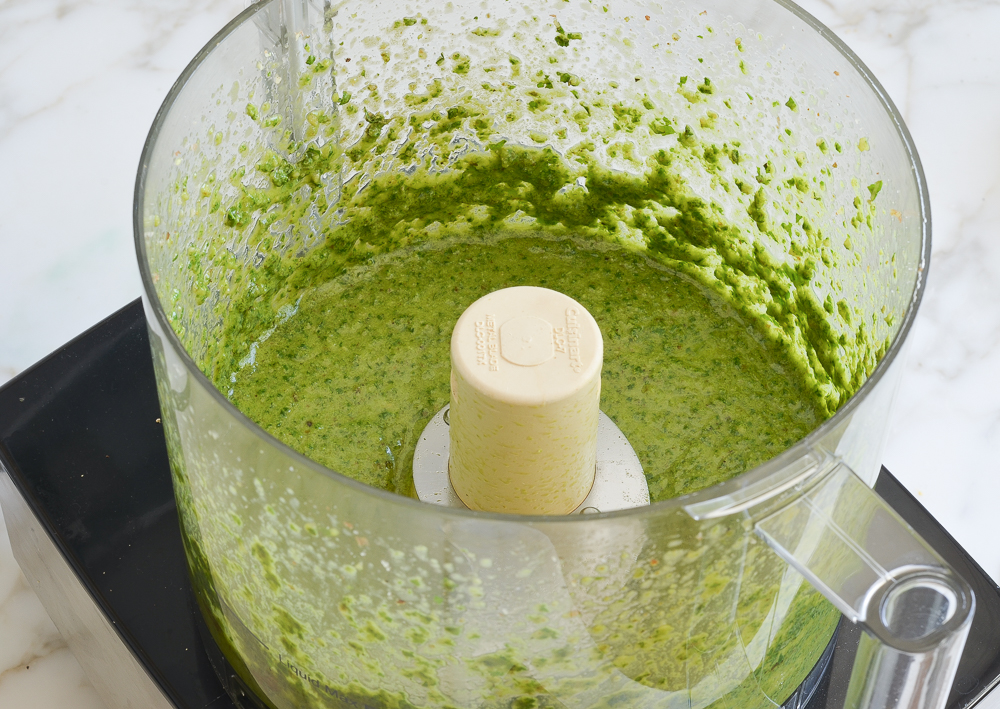
Add the Parmigiano-Reggiano.
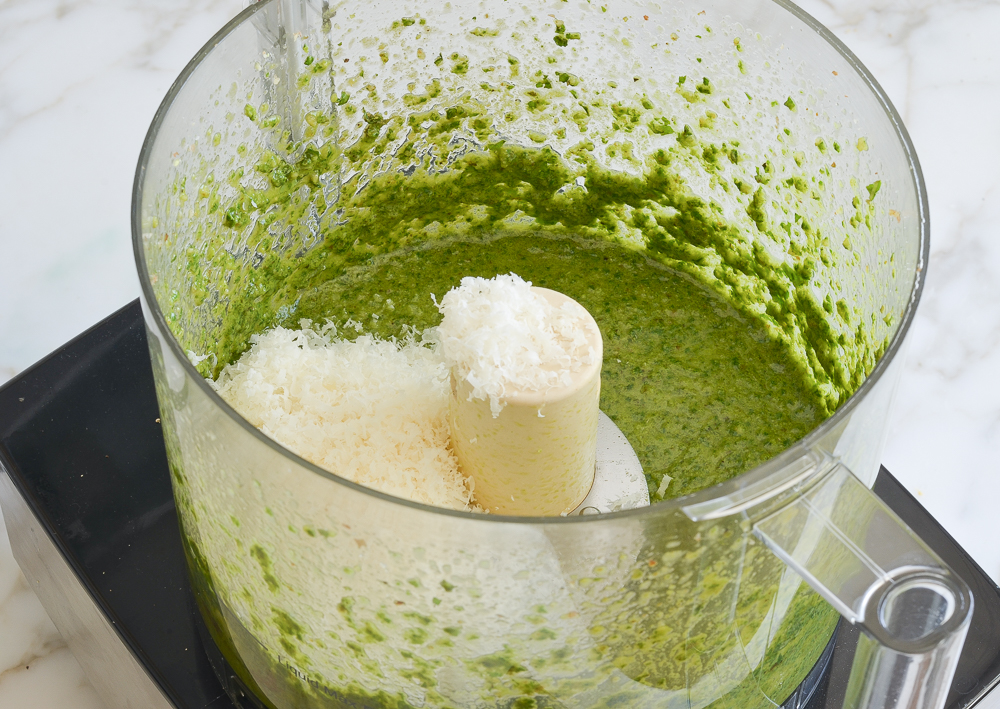
Process again until smooth, and that’s your pesto sauce.
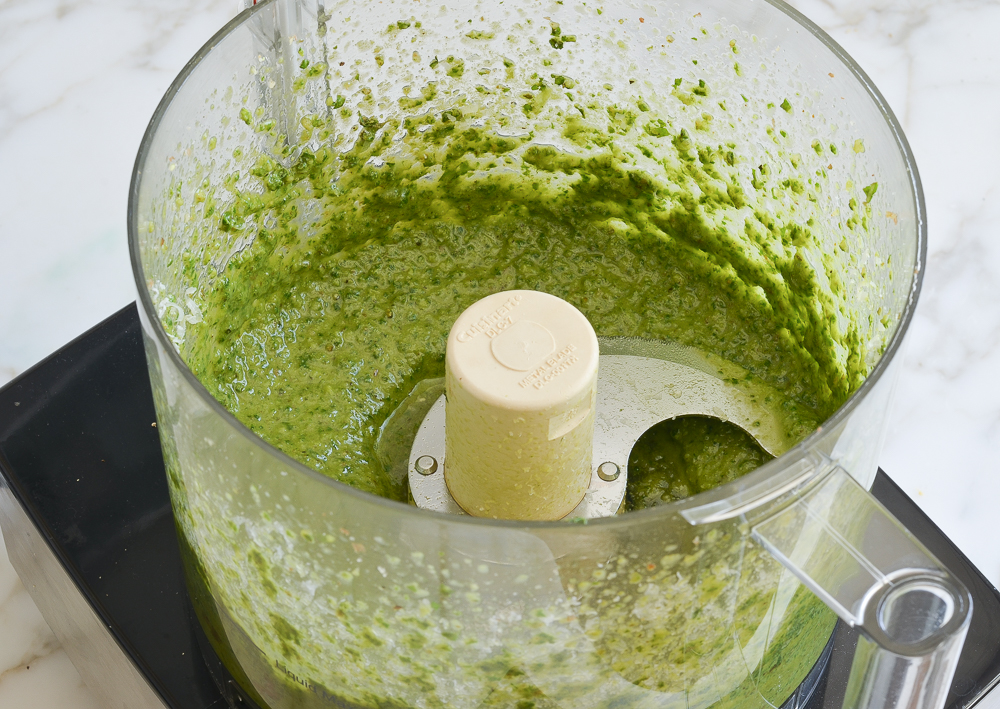
How To Store & Freeze Pesto
Use the pesto immediately or store it in a tightly sealed jar or air-tight plastic container, covered with a thin layer of olive oil (this seals out the air and prevents the sauce from oxidizing, which would turn it an ugly brown color). It will keep in the refrigerator for about a week.
Pesto can also be frozen in an airtight container for up to 6 months. I suggest dividing it into the compartments of an ice cube tray and freezing. Once frozen, remove the cubes from the tray and put in a sealable plastic bag or airtight container. You can add the defrosted cubes to vegetable soup, pasta salad with pesto, zucchini noodles, pesto pizza, eggs, sandwiches, and baked potatoes.

Video Tutorial
You May Also Like
The Best Basic Pesto
Homemade pesto sauce is easy to whip up and delicious on just about everything—from pastas and pizzas to salads and sandwiches.
Ingredients
- ⅓ cup walnuts
- 2 large garlic cloves, roughly chopped
- 2 cups packed fresh basil leaves
- ½ teaspoon salt
- ¼ teaspoon ground black pepper
- ⅔ cup extra virgin olive oil
- ½ cup grated Parmigiano-Reggiano
Instructions
- Place the walnuts and garlic in the bowl of a food processor fitted with a steel blade. Process until coarsely chopped, about 10 seconds. Add the basil leaves, salt, and pepper and process until mixture resembles a paste, about 1 minute. With the processor running, slowly pour the olive oil through the feed tube and process until the pesto is thoroughly blended. Add the Parmesan and process a minute more. Use pesto immediately or store in a tightly sealed jar or air-tight plastic container, covered with a thin layer of olive oil (this seals out the air and prevents the pesto from oxidizing, which would turn it an ugly brown color). It will keep in the refrigerator for about a week.
- Freezer-Friendly Instructions: Pesto can be frozen in an airtight container for up to 6 months. You can also divide your prepared pesto into the compartments of an ice cube tray and freeze. Once it’s frozen, remove the pesto cubes from the tray and put in a sealable plastic bag or airtight container. You can add the defrosted pesto cubes to soups, pasta dishes, eggs, sandwiches, and potatoes.
Nutrition Information
Powered by ![]()
- Serving size: 2 Tbsp.
- Calories: 159
- Fat: 17 g
- Saturated fat: 3 g
- Carbohydrates: 1 g
- Sugar: 0 g
- Fiber: 0 g
- Protein: 3 g
- Sodium: 161 mg
- Cholesterol: 4 mg
This website is written and produced for informational purposes only. I am not a certified nutritionist and the nutritional data on this site has not been evaluated or approved by a nutritionist or the Food and Drug Administration. Nutritional information is offered as a courtesy and should not be construed as a guarantee. The data is calculated through an online nutritional calculator, Edamam.com. Although I do my best to provide accurate nutritional information, these figures should be considered estimates only. Varying factors such as product types or brands purchased, natural fluctuations in fresh produce, and the way ingredients are processed change the effective nutritional information in any given recipe. Furthermore, different online calculators provide different results depending on their own nutrition fact sources and algorithms. To obtain the most accurate nutritional information in a given recipe, you should calculate the nutritional information with the actual ingredients used in your recipe, using your preferred nutrition calculator.
Gluten-Free Adaptable Note
To the best of my knowledge, all of the ingredients used in this recipe are gluten-free or widely available in gluten-free versions. There is hidden gluten in many foods; if you're following a gluten-free diet or cooking for someone with gluten allergies, always read the labels of your ingredients to verify that they are gluten-free.

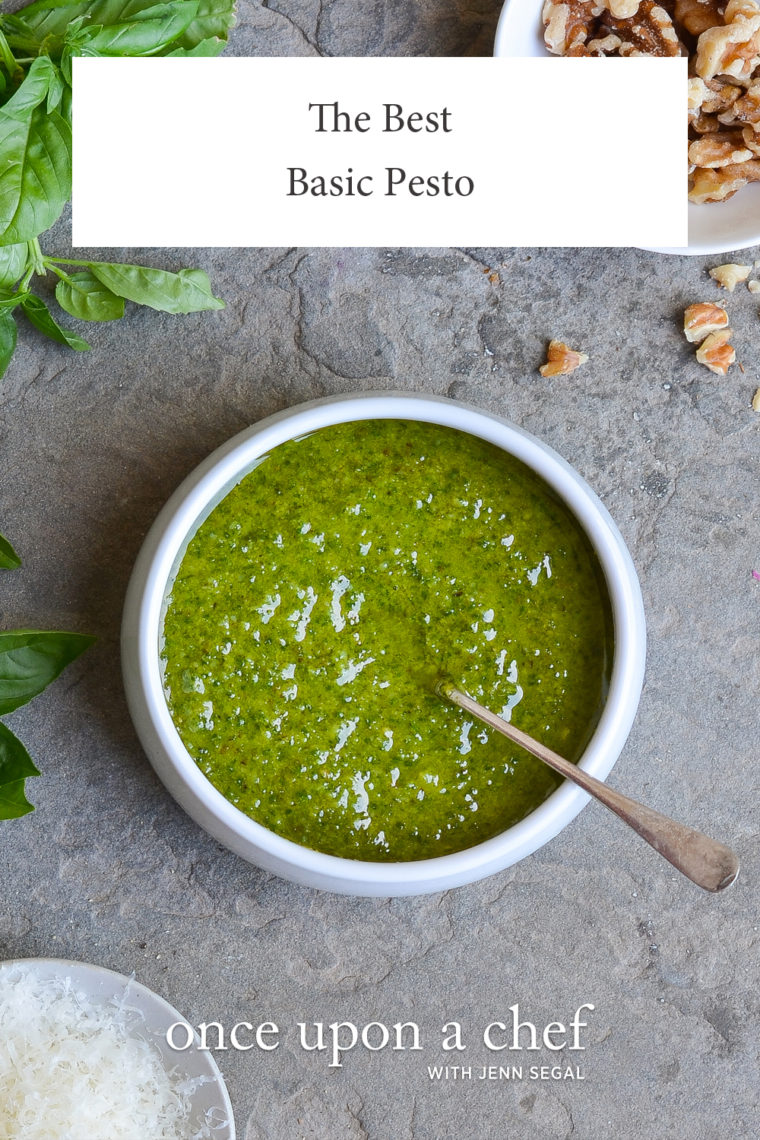
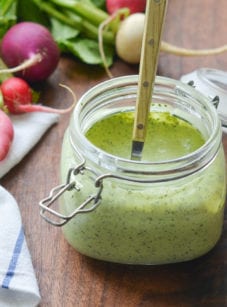
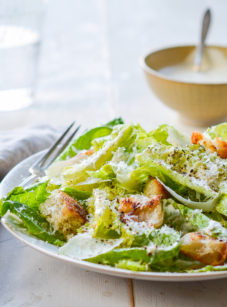

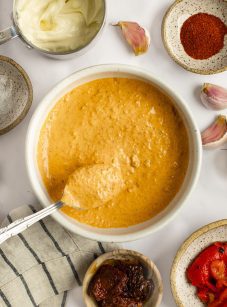
This recipe is excellent! I made two batches, one with walnuts and another with raw cashews. I toasted the nuts (350 for 4 minutes in an air fryer) and added a little lemon to the walnut pesto. They both turned out great.
Almost embarrassed to say that I have never eaten pesto before, let alone made it. I am now officially an addict because of this amazing recipe!
Perfecto!!
Do you think I could use pumpkin seeds? I have a tree nut allergy.
Hi Stephanie, it may work, but I’ve never tried it so I can’t say for sure. If you try it, I’d love to hear how it turns out!
I would try roasted sunflower seeds instead, for a smoother sauce. You could even pre soak them so they blend up better.
So easy and delicious! I added a squeeze of lemon and a pinch of sugar. YUMMY!
I’ve tried lots of Pesto Recipes and this is now my go to for Pesto. Basil seems to love our South Carolina summers and grows like crazy. I make batches and freeze it in ice cube trays. I pull out a cute or two and it’s ready.
I’ve made this pesto countless times and it always comes out perfect, though I do gauge the amount of each ingredient depending on the amount of basil I’m using and taste. I never had Pine Mouth Syndrome but I had a similar reaction with zinc lozenges. So no pine nuts or zinc lozenges for me. Walnuts work perfectly fine in this recipe.
Why did this email come through as your first name vs. Once Upon a Chef? I love your receipes.
Great question — I haven’t experienced that before! (And so glad you like the recipes 😊)
Hi Jenn, can you use a mix of Genoese basil and Purple Rubin? I find the purple basil sweeter than the green
Hi Diane, The color and the flavor may be slightly different with those varieties of basil, but it should work. I’d love to hear how it turns out!
This is my go to basil pesto recipe for a few years now! I have shared with many! Thank you!